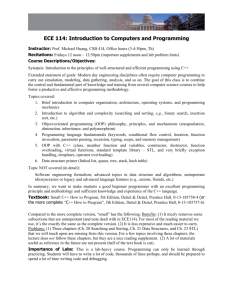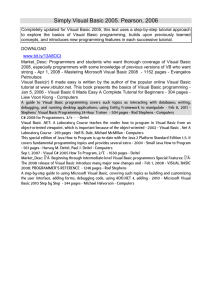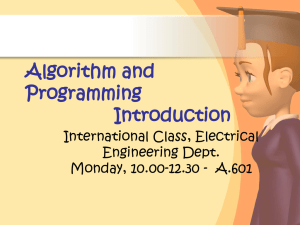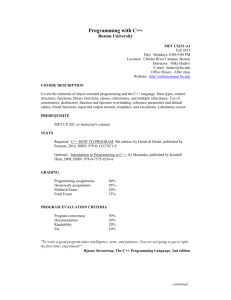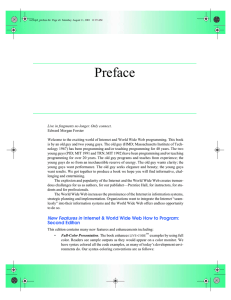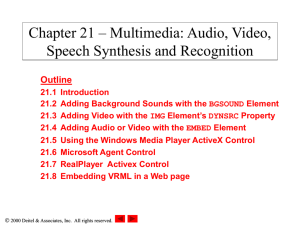Understanding Object Interactions via Our ATM OO Design
advertisement
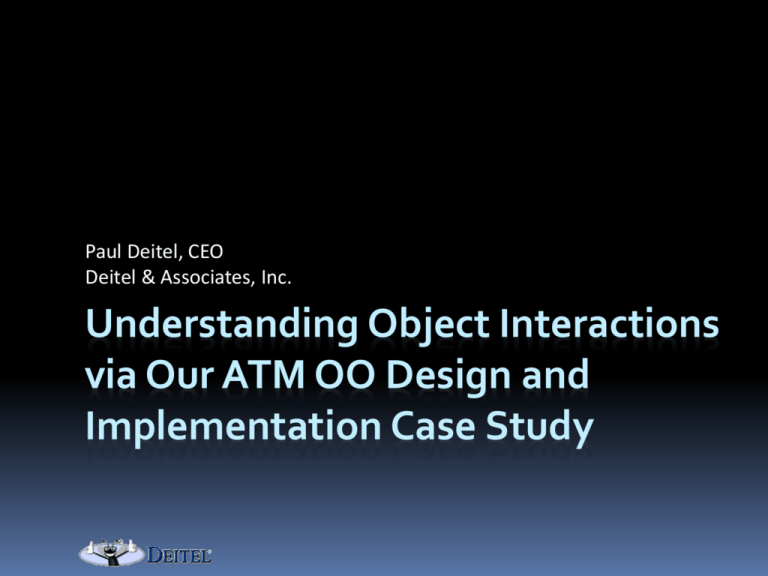
Paul Deitel, CEO Deitel & Associates, Inc. Understanding Object Interactions via Our ATM OO Design and Implementation Case Study Contact Information Paul Deitel, CEO Deitel & Associates, Inc. Twitter: @deitel/@pdeitel Facebook: http://tinyurl.com/deitelfacebook deitel@deitel.com www.deitel.com Source Code: http://tinyurl.com/ATMCaseStudy Our Early OO Days 1991 Our first C++ corporate seminar Lots of Live-Code examples Complete working programs Prove that features work Our Early OO Days OO presentation Create one or more classes Create one or more objects of those classes Call the objects’ methods to do stuff Missing Piece of the Puzzle How do objects interact with one another? ATM Case Study Popular example—people can relate to it Available in 4 languages Java, C++, Visual Basic and Visual C# “How to Program” books Fully solved Encourages instructors to work it into first or second programming courses that cover OO Encourages students to study on their own if it’s not part of a course Corporate Trainers Case study often helps us close a deal Especially for non-OO audiences Students comment on evals that it ties the OO concepts together in a meaningful way 3 to 4 hours to present in detail Simplifying Assumptions Bank has one ATM Emulate what an ATM does One account per user Username and PIN entered by user at keyboard—no card reader Use software to simulate certain hardware Use an object to represent the database Separate system validates deposits … Case Study Coverage Starts with System Requirements Presents 6 UML diagram types Use case, class, state machine, activity, communication, sequence Others overviewed in an appendix Simplified design process Requirements document Relate this to the final code we generated from it Diagrams Use case diagrams Interactions between a system and its external entities (actors) View Account Balance, Withdraw Cash and Deposit Funds Class diagrams Model classes used in a system. Specify structural relationships between system parts State machine diagrams Model how an object changes state Indicated by the values of object attributes at a given time Diagrams Activity diagrams Model workflow during program execution Model actions and order in which they’re performed Communication diagrams Model interactions among objects Emphasis on what interactions occur. Sequence diagrams Model interactions among objects Emphasis on when interactions occur Parts of Our Design Process Chapter 12 Examine the Requirements Document Identify the Classes Identify Class Attributes Identify Objects’ States and Activities Identify Class Operations Indicate Collaboration Among Objects Parts of Our Design Process Chapter 13 Start to Program the Classes Incorporate Inheritance and Polymorphism into the design Final Class Diagrams Final Class Diagrams The Implementation Implement the ATM System Discussion focuses on how we used the design to Determine each class’s name, attributes, behaviors and relationships to other classes Determine the objects to create Implement interactions between objects as memberfunction calls Also how we determined additional attributes, behaviors and interactions that were not in the original design How I Present It Read the Requirements Document Explain the simplifying assumptions Discuss the simplified design process Discuss each UML diagram Purpose How it helps you write the code that implements the system Contact Information Paul Deitel, CEO Deitel & Associates, Inc. Twitter: @deitel/@pdeitel Facebook: http://tinyurl.com/deitelfacebook deitel@deitel.com www.deitel.com Source Code: http://tinyurl.com/ATMCaseStudy
